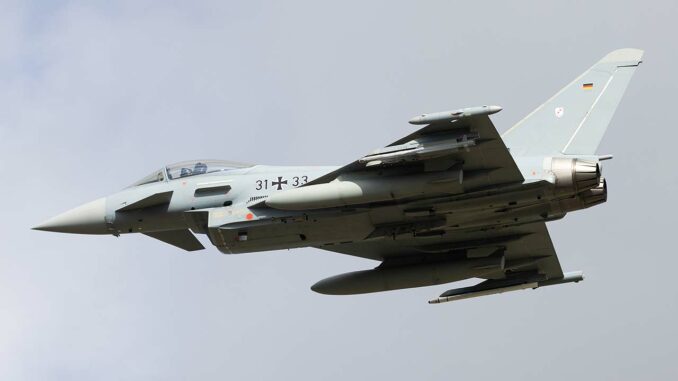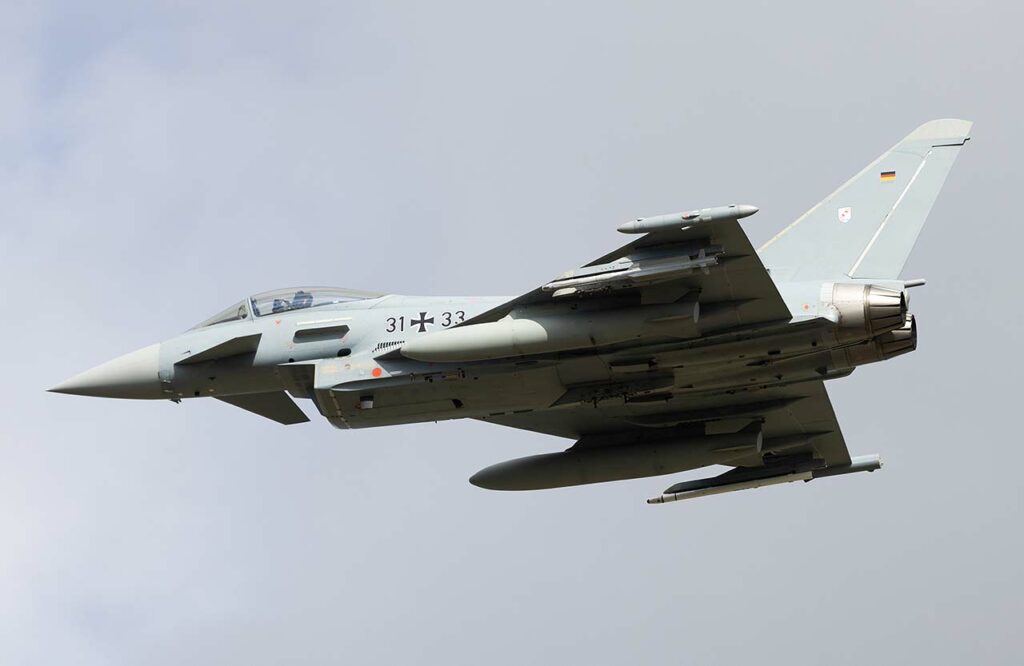
The Eurofighter Typhoon, a fourth-generation mainstay of the British Royal Air Force (RAF), faces an uncertain future in an age increasingly dominated by stealth technology. Although it excels in rapid reaction warning and air policing, the Typhoon’s non-stealth design could limit its relevance against advanced adversaries.
The Eurofighter Typhoon, introduced two decades ago, has been a crucial asset for the RAF, as has the F-16 Fighting Falcon for the US Air Force. For missions such as early warning and air policing, which don’t always require the stealth capabilities of fifth-generation fighters, the Typhoon remains extremely effective. It offers long range, better performance at high altitude, and is less expensive to operate. However, despite its impressive capabilities, the era of fifth- and sixth-generation stealth fighters may soon render the Typhoon obsolete.
Current plans are to keep the Typhoon in service until at least 2040. However, the development of sixth-generation fighters, such as the Future Combat Air System (FCAS), could accelerate its retirement. Although the Typhoon is continually updated with contemporary electronic systems and state-of-the-art radar, these upgrades come at a high cost. Some of the older versions of the Typhoon are expected to be retired up to fifteen years earlier than originally planned, making it difficult to maintain air superiority skills within the RAF.
Despite these challenges, the Typhoon will not disappear immediately. It remains the backbone of the RAF and will continue to play a crucial role in defense operations. Compared with the F-35B, for example, the Typhoon is more economical to operate, partly because it does not require the maintenance of a complex stealth skin, and because its supply chain is predominantly UK-managed, offering greater control and flexibility.
The UK is also working on the development of the FCAS in collaboration with other countries. This sixth-generation stealth fighter program is still in its early stages, and is not expected to enter production for several years. However, it symbolizes the constant pressure to innovate in military aviation, which will eventually render the Typhoon obsolete.

The Typhoon, with its twin-engine design, delta wings and canards, is easily recognizable. Built from lightweight materials, including 82% composites, it offers impressive agility at both low and supersonic speeds. This agility comes from its relaxed stability design, so unstable that a pilot could not control it without electronic assistance. The quadruplex digital flight control system keeps the aircraft stable, preventing pilots from oversteering.
Although the Typhoon is not a stealth fighter, features have been added to reduce its radar cross-section (RCS). For example, air intakes mask the front of radar engines, and the edges of wings, canards and tail fins are angled to avoid reflecting radar energy forward. Some external weapons are semi-recessed into the airframe to partially shield them from radar. Radar-absorbing materials (RAM) are also used on reflective points such as the leading edges of wings and air inlets.
The Typhoon is powered by two Eurojet EJ200 engines, capable of delivering up to 20,230 lb of thrust with afterburner. These engines incorporate advanced technologies such as digital control and condition monitoring, single-crystal turbine blades and a convergent/divergent exhaust nozzle. These features translate into a high thrust-to-weight ratio, low fuel consumption and reduced operating costs.
The Eurofighter Typhoon is a high-performance aircraft that will remain in service for at least another fifteen years. However, its non-stealth design and rapid advances in stealth technologies herald the end of its role as a leading air superiority fighter. As the UK and other countries develop new stealth fighters, the Typhoon will have to make way for more advanced aircraft, adapted to the demands of the modern battlefield. The transition to these new technologies will determine the future of the RAF and how it maintains its air superiority in the decades to come.
War Wings Daily is an independant magazine.